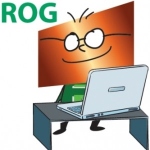
Rogers' Micro Channel Coolers (MCC) in High Performance Computing (HPC) Applications
In 2004, and even some time before the global PC gaming boom started, curamik® engineers from the field of high power laser cooler applications came up with the idea to use our unique Direct Bonded Copper (DBC) technology and developed special micro channel cold plates for CPU cooling.
Rogers Micro-Channel Coolers´ (MCC) Applications in Several Different Markets - Guess Which Ones
About two decades ago, engineers in the field of laser technique were looking for a partner to design and build high power coldplates that could support their need for a cutting-edge cooling system targeted to their laser bars. Together with the curamik® engineering team the idea of bonded micro-channel-coolers was born.
Olivier's Twist Blog, General Industrial, Wired Infrastructure
curamik® Micro Channel Coolers
Olivier Mathieu talks about the design, internal structure and thermal performance of our micro channel liquid coolers.
Olivier's Twist Blog, Aerospace & Defense, General Industrial, Wired Infrastructure
Simulations That Help You
Electronic systems rely on efficient combination and distribution of voltages and currents from different sources. In high-power applications, such as industrial drives, renewable energy inverters, powertrains for electric vehicles and converters used in rail, energy must be channeled with minimal power losses.
Olivier's Twist Blog, Automotive & EV/HEV, General Industrial, Rail, Wind & Solar, Wired Infrastructure
There is a Packaging Problem to Solve for Silicon Carbide Devices
There is currently a lot of interest for silicon carbide (SiC) as a semiconductor material because its properties make it more promising than silicon for power electronics applications.
Olivier's Twist Blog, Automotive & EV/HEV, General Industrial, Rail, Wind & Solar, Wired Infrastructure
Thermal Management: A Broad Overview of Cooling Techniques
In the world of electronics, heat can severely shorten the lifetime of a device. It is therefore necessary to move heat away from vital components such as chips, LEDs, and inverters to maintain optimal performance without shortening the lifetime. There are many different thermal management techniques that can be utilized by engineers depending on the devices heat density, space constraints and cost.
Olivier's Twist Blog, Aerospace & Defense, General Industrial, Portable Electronics, Wired Infrastructure
Thermal Resistance Value in a Data Sheet Doesn’t Tell the Whole Story About Thermal Performance
A data sheet is the main source of information for design engineers to understand the overall performance of a power module. It provides a wide variety of values and diagrams but detailed background explanations on each parameter are often missing. On the other hand, a test set up cannot cover all possible applications or operating conditions and the values can vary according to the user's particular application.
Olivier's Twist Blog, Automotive & EV/HEV, Aerospace & Defense, General Industrial, Wind & Solar, Wired Infrastructure
Woven Glass Laminates in PCBs
Woven glass is incorporated into printed-circuit-board (PCB) materials to provide structural strength. It aids the mechanical stability of a laminate, but what does it do to its electrical behavior? One of the classic concerns regarding woven glass reinforced laminate PCBs is that the “glass weave effect” can have negative impact on the electrical performance of high-speed or high-frequency circuits fabricated on these laminates. In this blog post, we examine some of the factors affecting the glass weave effect phenomenon.


